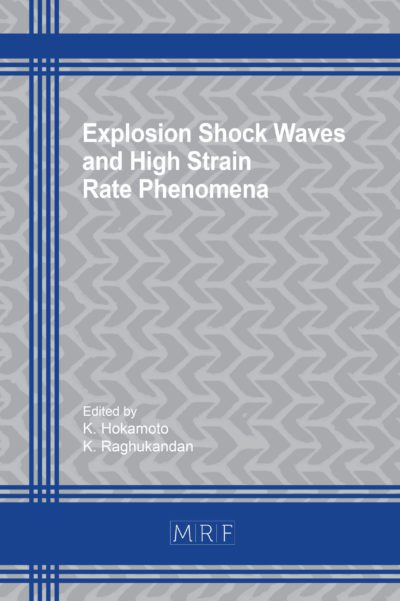Influence of DIC settings on temperature fields in combined thermal-kinematic measurements for heterogeneous tests
Alessandro Lambrughi, Sandrine Thuillier, Sam Coppieters
Abstract. The integration of Digital Image Correlation with Infrared Thermography (DIC-IRT) in heterogeneous tests provides information rich kinematic and thermal field data. Thanks to the commercial availability of optical devices, this technique is gaining attraction to characterize the thermomechanical behavior of metals. However, achieving accurate full-field results requires a deep understanding of all the uncertainties arising from the complex measurement and post-processing chains. To this end, this paper studies the previously unexplored effect of user-dependent DIC settings on temperature fields. The solution approach relies on a Digital Virtual Twin (DVT) simulating a post-necking tensile test on a thick S700MC steel assisted with DIC-IRT. The novelty here is that the DVT combines the state-of-the-art virtual image deformation with the metrological aspect of thermal measurement. The results show that, under heterogeneous temperature and strain fields, DIC settings introduce a systematic temperature error with local biases comparable to the measurement error. According to this finding, a spatially converged displacement field is required to measure an accurate thermal field in heterogeneous tests.
Keywords
Digital Image Correlation, Infrared Thermography, Digital Virtual Twin, Temperature Error Quantification
Published online 5/7/2025, 10 pages
Copyright © 2025 by the author(s)
Published under license by Materials Research Forum LLC., Millersville PA, USA
Citation: Alessandro Lambrughi, Sandrine Thuillier, Sam Coppieters, Influence of DIC settings on temperature fields in combined thermal-kinematic measurements for heterogeneous tests, Materials Research Proceedings, Vol. 54, pp 1510-1519, 2025
DOI: https://doi.org/10.21741/9781644903599-163
The article was published as article 163 of the book Material Forming
![]() Content from this work may be used under the terms of the Creative Commons Attribution 3.0 license. Any further distribution of this work must maintain attribution to the author(s) and the title of the work, journal citation and DOI.
Content from this work may be used under the terms of the Creative Commons Attribution 3.0 license. Any further distribution of this work must maintain attribution to the author(s) and the title of the work, journal citation and DOI.
References
[1] Bodelot L., 2008. Étude couplée des champs cinématiques et thermiques à l’échelle de la microstructure des matériaux métalliques, PhD thesis, Université des Sciences et Technologie de Lille
[2] Martins J.M.P et al., 2021. Calibration of a modified Johnson-Cook model using the Virtual Fields Method and a heterogeneous thermo-mechanical tensile test, Int. J. Mech. Sci., vol 202-203. https://doi.org/10.1016/j.ijmecsci.2021.106511
[3] Lava P. et al., 2009. Assessment of measuring errors in DIC using deformation fields generated by plastic FEA, Opt. Lasers Eng., vol 47, p747-753. https://doi.org/10.1016/j.optlaseng.2009.03.007
[4] Lava P. et al., 2010. Study of systematic errors in strain fields obtained via DIC using heterogeneous deformation generated by plastic FEA, Opt. Lasers Eng., vol 48, p457-468. https://doi.org/10.1016/j.optlaseng.2009.08.013
[5] Denys K., 2017. Investigation into the plastic material behaviour up to fracture of thick HSS using multi-DIC and FEMU, PhD thesis, KU Leuven-faculty of Engineering Technology
[6] Toussaint E et al., 2012. Combining displacement, strain, temperature and heat source fields to investigate the thermomechanical response of an elastomeric specimen subjected to large deformations, Polym. Test., vol 31, p916-925. https://doi.org/10.1016/j.polymertesting.2012.04.013
[7] Simulia. Abaqus/standard, version 2022
[8] EN ISO 6892-1: 2009. Matériaux métalliques — Essai de traction Partie 1: Méthode d’essai à température ambiante
[9] EN 1993-1-2: 2005. Eurocode 3: Design of steel structures – Part 1-2: General rules – Structural fire design
[10] Shakil S. et al., 2020. Experimental studies on mechanical properties of S700 MC steel at elevated temperatures, Fire Saf. J., vol 116. https://doi.org/10.1016/j.firesaf.2020.103157
[11] L. Guoqiang and W. Peijun, Advanced Analysis and Design for Fire Safety of Steel Structures, chapter 3: Properties of Steel at Elevated Temperatures, Springer Berlin, Heidelberg, 2013. https://doi.org/10.1007/978-3-642-34393-3
[12] Keränen L et al., 2021. Ultrahigh-strength steels at elevated temperatures, J. Constr. Steel Res., vol 183. https://doi.org/10.1016/j.jcsr.2021.106739
[13] Schlosser R. P., 2008. Influence of thermal and mechanical aspects on deformation behaviour of NiTi alloys, PhD thesis, Université Joseph-Fourier – Grenoble
[14] MatchID software, version 2024.1.












